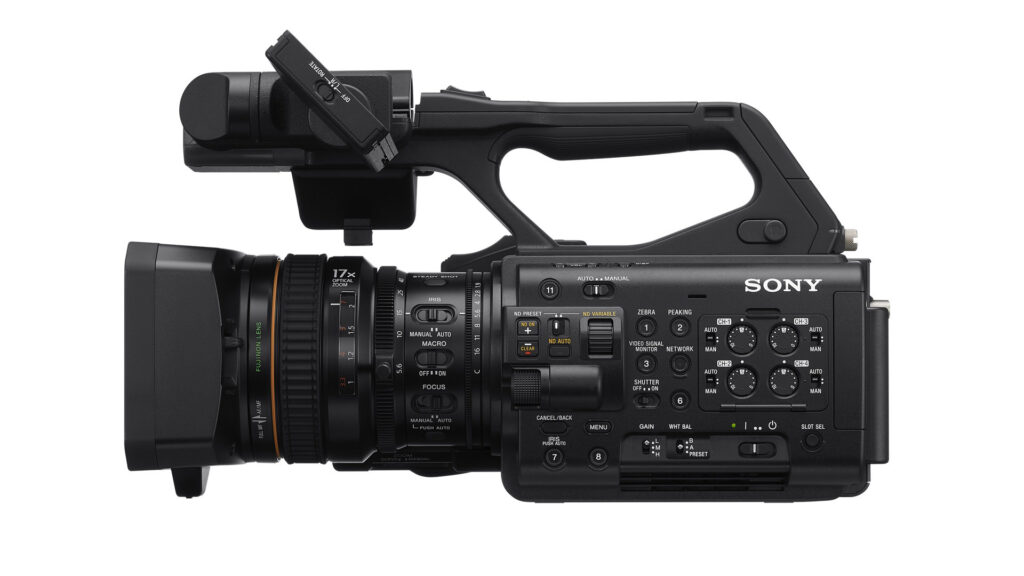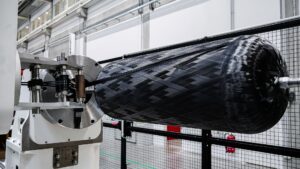
Sony has announced its latest flagship handheld XDCAM camcorder, the PXW-Z300, marking a significant milestone in professional video production. Set for release in fall 2025, this new model is positioned as a potential game-changer for news organizations and content creators grappling with authenticity concerns in an era of deepfakes and digital manipulation.
Camcorders, despite the dominance of full-frame and S35 sensors in the industry, continue to hold relevance, particularly in news and event coverage where their built-in zoom capabilities offer advantages over larger sensor alternatives. Sony’s commitment to innovation in this area underscores the ongoing demand for versatile, reliable video recording solutions.
Revolutionary Content Authentication
The PXW-Z300 distinguishes itself as the world’s first camcorder to embed digital signatures directly into video files. This feature, based on the C2PA (Coalition for Content Provenance and Authenticity) standard, represents Sony’s expansion of authenticity initiatives from still photography into video production. For news organizations increasingly concerned about content verification, this could prove invaluable.
The timing of this feature is particularly relevant given the industry’s growing emphasis on combating misinformation with AI-generated images and establishing content provenance. However, the practical implementation and workflow integration of this technology in real-world newsroom environments remain to be seen.
Advanced Technical Specifications
Under the hood, the PXW-Z300 features 1/2-inch back-illuminated 4K 3-CMOS Exmor R sensors paired with Sony’s BIONZ XR image processing engine. The camera supports 4K 60p recording and incorporates what Sony describes as “F123 sensitivity,” though specific low-light performance metrics weren’t detailed in the announcement.
The 17x optical zoom lens with F1.9 constant maximum aperture provides versatility for various shooting scenarios. The inclusion of digital extender functionality offers 1.5x zoom in 4K mode and up to 4x in HD mode, which could prove useful for news gathering where physical proximity to subjects isn’t always possible.
AI Autofocus and Variable ND Filter
The PXW-Z300 incorporates a dedicated AI-processing unit alongside its main image processor, enabling what Sony calls “high-precision subject recognition.” The system reportedly can maintain autofocus on human subjects even when they’re facing away from the camera or wearing facial coverings, a feature valuable for news coverage and documentary work.
The Electronic Variable ND filter with seamless adjustment from 1/4 to 1/128, combined with optical image stabilization, addresses a common challenge for documentary and news shooters who frequently move between drastically different lighting conditions.
Connectivity and Streaming Capabilities
Sony has prioritized network functionality, with the PXW-Z300 supporting 5G and cloud technologies for immediate content transfer and live streaming. The camera supports common streaming protocols including RTMP/RTMPS and SRT, potentially enabling direct broadcast from remote locations.
The newly added HEVC codec support for proxy material transmission could improve efficiency in post-production workflows, allowing editing to begin while material is still being captured through chunk format recording. Integration with Sony’s ecosystem services like C3 Portal and Ci Media Cloud suggests the company is positioning this as part of a comprehensive production solution rather than a standalone device.
Market Positioning and Future Prospects
Sony’s positioning of the PXW-Z300 across multiple markets—news, sports, corporate, events, documentary, live programming, and reality shows—suggests broad ambitions. However, this wide targeting raises questions about whether the camera’s feature set truly optimizes for any specific use case or attempts to be everything to everyone.
The fall 2025 release timeline places the PXW-Z300 in a competitive landscape where other manufacturers are also pushing AI integration and enhanced connectivity. Pricing information wasn’t disclosed, which will ultimately determine the camera’s accessibility to its intended markets.
The Authenticity Question
While a signature “guaranteeing” images or videos are not AI-generated from a video camera can be considered real innovation, its real-world impact will depend on industry adoption and integration into existing verification workflows. News organizations will need to evaluate whether this technology provides sufficient value to justify potential workflow changes and whether the embedded authenticity information can withstand the technical and legal scrutiny required in professional journalism.
The PXW-Z300 will be exhibited at BIRTV 2025 in Beijing, providing the first opportunity for industry professionals to evaluate these features hands-on. Until end users really get to use it, Sony’s promises of enhanced operational efficiency and content authenticity remain compelling on paper but unproven in practice.




